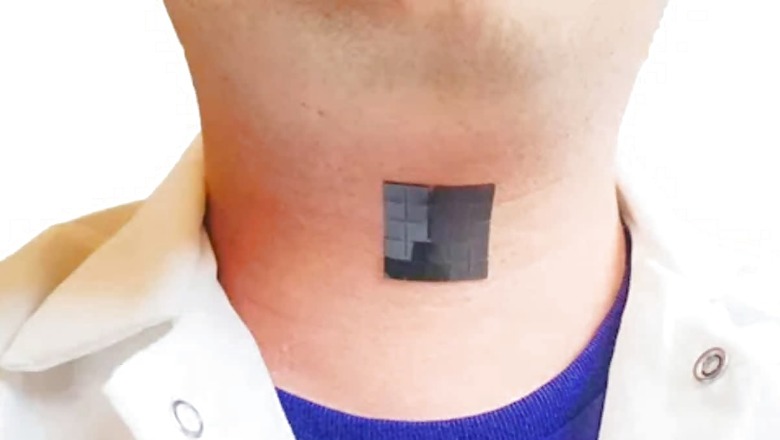
views
Scientists make various inventions to make our lives easier. Recently, scientists have made a discovery- a flexible gadget when attached to the neck can translate muscle motions into speech, allowing people to converse without using their vocal cords.
According to reports, the small patch not only detects the movements of the throat associated with speech but also harnesses that movement to generate electricity. This new gadget doesn’t require a battery or a connector to function. The device recently came to light in a study published on March 12 in the journal Nature Communications. According to the research, this technology will facilitate communication for persons with voice abnormalities caused by injured or paralysed vocal cords, along with those recuperating from surgery for throat cancer.
It was developed by scientists at the University of California to make the lives of people who suffer from speech problems easier. This patch can be worn around the neck externally. This adaptable device recognises and produces sound from the motions of the neck muscles.
Meanwhile, Jun Chen, an assistant professor of bioengineering at the University of California, Los Angeles, shared in a recent media interaction that he got the idea for the patch after he’d spent several hours lecturing and felt his voice becoming tired. He stated that he wanted to think of a way to solve this problem and make it possible for a person to speak without using their vocal cords, also known as vocal folds.
The patch’s design was first made in 2021 and was published in the journal Nature Materials. Now, in the latest study, the team has completed this patch that responds to the subtle stress placed on it by the movement of throat muscles. The device reacts instantly to a person’s desire to speak by generating electrical impulses that are then converted into speech.
There are five extremely thin layers in the patch. The centre layer of the patch, composed of silicon and micromagnets, creates a magnetic field that changes in response to the movement of the neck muscles, while the outside layers are composed of a soft, flexible silicon substance. The two layers surrounding it, made of coils of copper wire, convert these magnetic field changes into electrical signals. Later, a machine-learning system receives these electrical impulses and converts the pulses into speech.
To train the algorithm, each research participant repeated five brief words 100 times each, with their neck device on to monitor the program. This taught the system to associate specific movements with a given phrase. However, in a demonstration of the technology involving eight people without speech problems, the program translated the electrical impulses from the patch into speech with roughly 95 per cent accuracy.
















Comments
0 comment